The Definitive Guide to Pocket Spring Mattresses
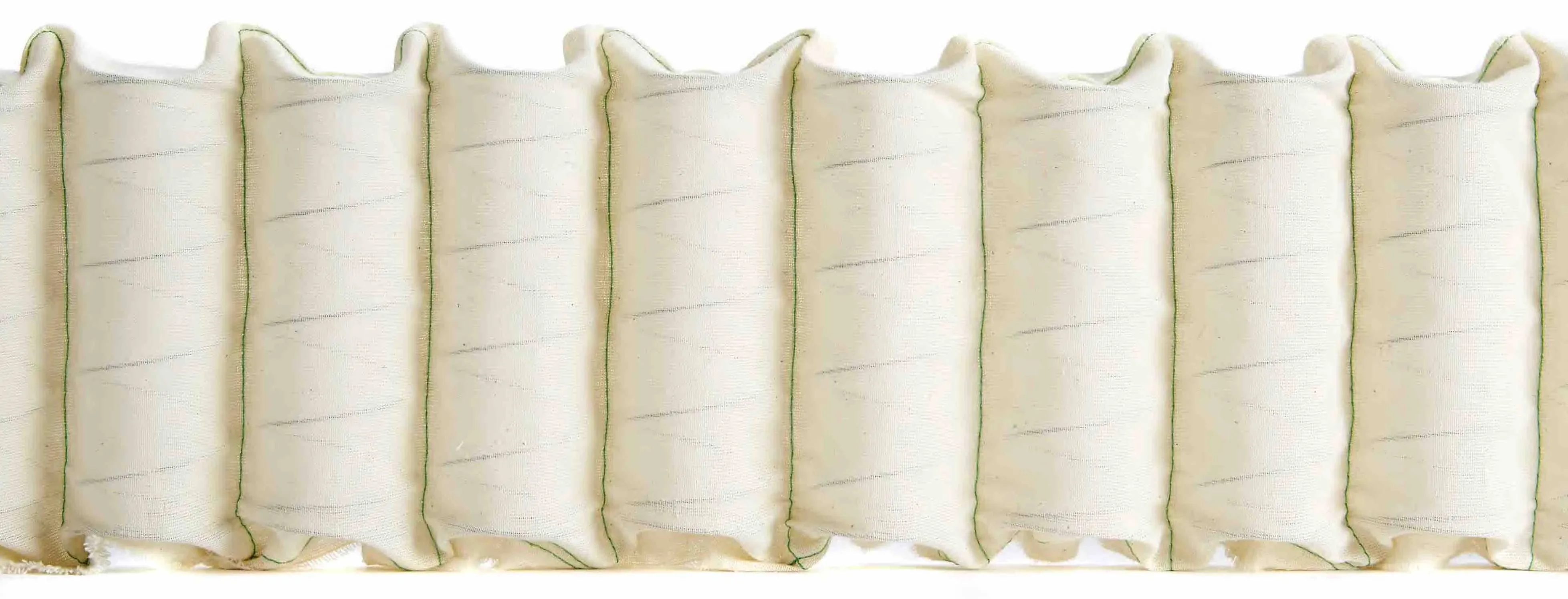
- What is a pocket sprung mattress?
- What are the benefits of a pocket sprung mattress?
- What are the tensions of a pocket spring?
- How many pocket springs should I get in my new mattress?
- Pocket spring counts explained
- Types of pocket spring
- Mattress upholstery and pocket springs
- Is a pocket sprung mattress good for a bad back?
- Pocket springs vs memory foam
- Guide to pocket spring mattresses
- Which is best: a pocket sprung or open coil mattress?
- How many pocket springs do I need in my mattress?
- Tailored spring gauges – soft, medium or firm?
- Pocket Spring wire diameter explained
- How are pocket springs made?
- What is the length of a pocket spring?
- What is a Vanadium spring?
- Other types of Pocket springs – Cortec, Revolution & Micro Springs
What is a pocket spring mattress?
A pocket spring is an individual wire spring that is then encased in some form of fabric or material. These springs are in separate sleeves or cases and don’t move as one piece compared to cage sprung beds. These springs are independent of each other.
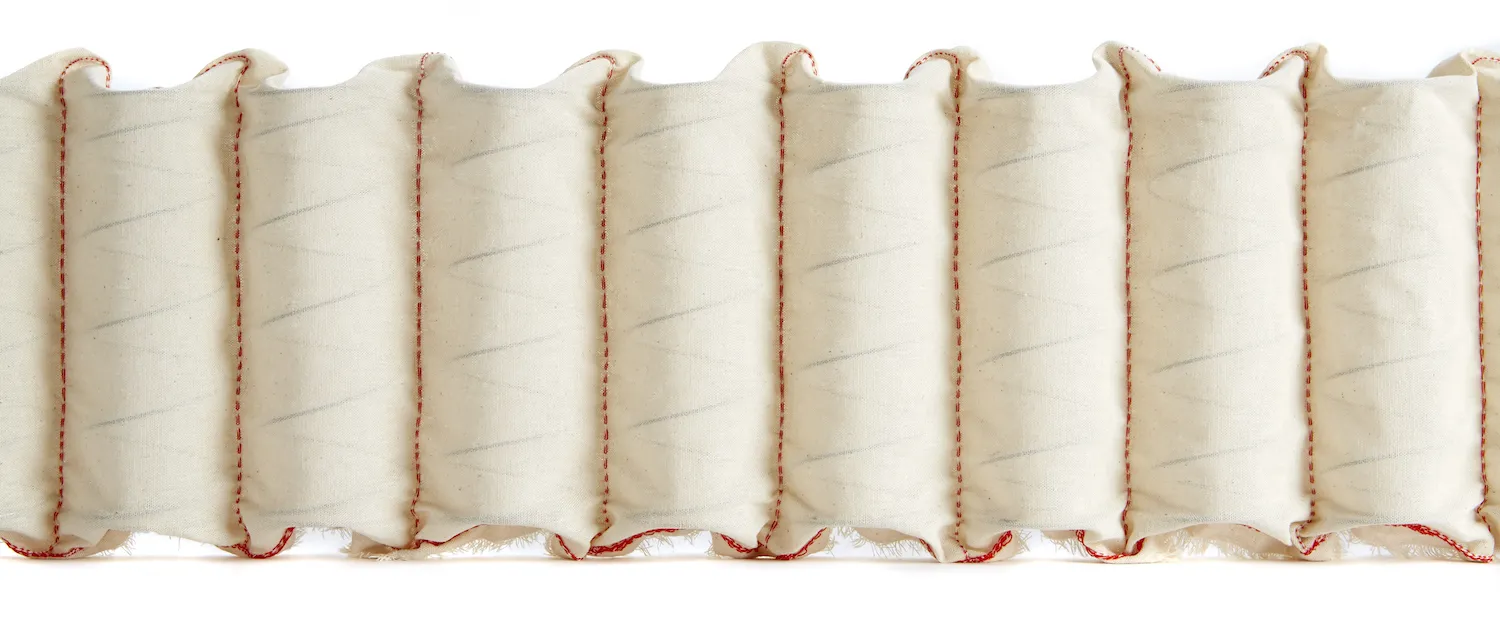
These individual pocket springs are ideally stitched together, joined using a method that’s known as “centre tying” or, in cheaper models, glued together. These processes create a length of pocket springs that are connected only by their covering.
This enables a sleeper to be supported independently by each pocket spring. Calico pocket springs are usually only found on high-end mattress construction models.
Let’s also clear up what isn’t a pocket spring or pocket sprung mattress.
Common names such as Orthopaedic, Continuous Coil, Bonnel coil, Bonnel sprung, Miracoil and Opencoil are all cheap cage sprung systems. If a manufacturer is using premium pocket springs in their mattresses, trust us, they will want to tell you all about it!
What are the benefits of a pocket sprung mattress?
- Pocket springs help prevent movement/transference between sleepers.
- Pocket springs allow a more consistent firmness across a mattress.
- Pocket spring beds are breathable and don’t allow heat to build-up.
- Pocket sprung mattresses enable you to have far greater support than a cage sprung or open coil mattress, as they contour more closely to a sleeper’s body.
- The highest quality pocket springs will be calico encased and the spring wire will be vanadium plated, ensuring the wire stays rust-free.
- Pocket sprung mattresses enable you to choose tailored tensions to suit your exact bodyweight.
Pocket sprung mattresses are particularly good for when you’re sharing a bed with a sleeping partner. If you toss and turn a lot, or are of a drastically different weight to your partner, then a pocket sprung mattress will minimise the movement. This is because pocket springs don’t move as one unit (like an open coil mattress would do).
Each spring is individually involved in supporting your body, so there’s less “roll-together” and transfer of movement.
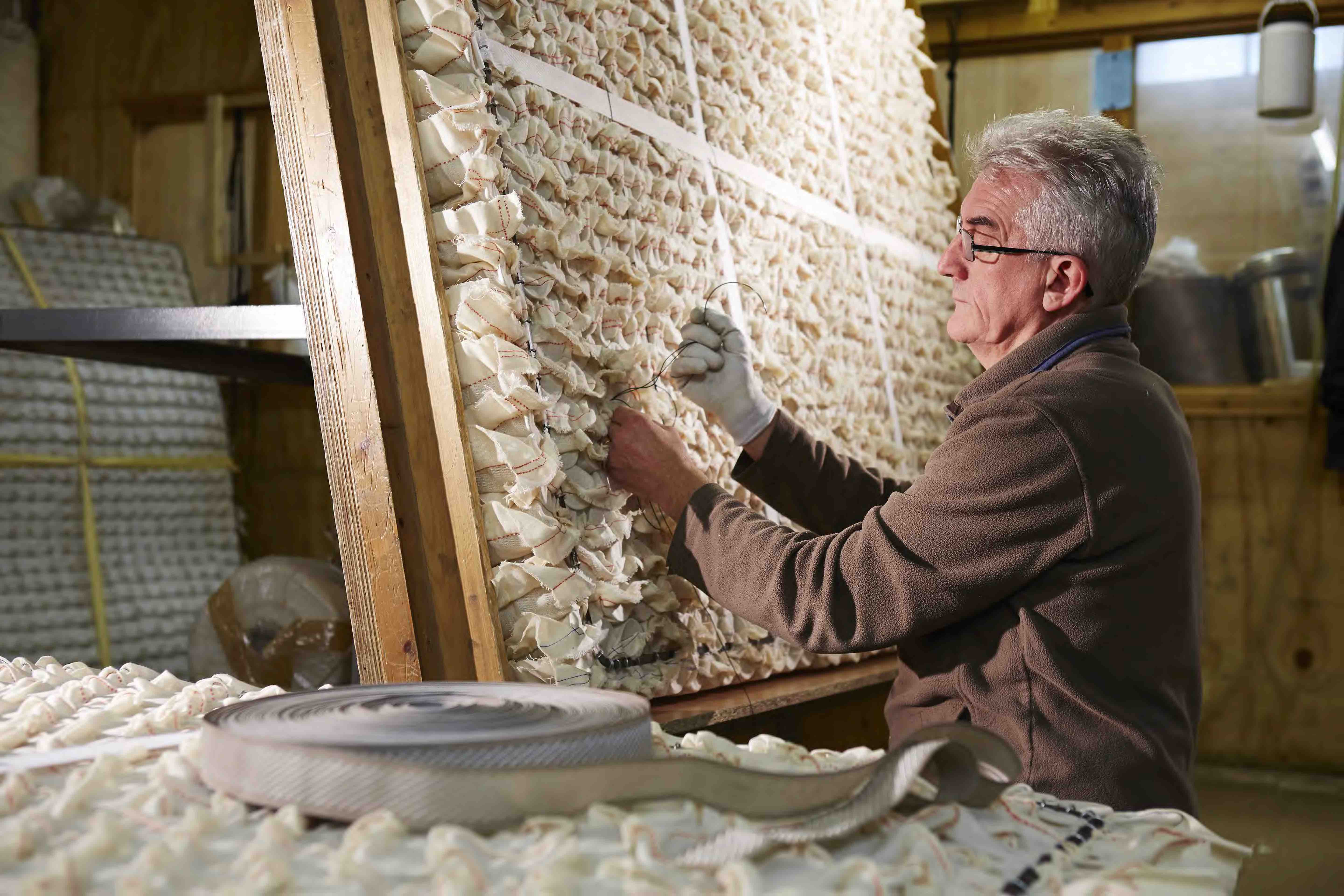
What are the tensions of a pocket spring?
Pocket springs come in 3 main spring tensions.
- Soft (1.2 gauge)
- Medium (1.4 gauge)
- Firm (1.6 gauge)
The tension you need depends on your body weight and not how soft, medium or firm you want the upholstery to feel. In fact, the tension of a mattress is not always dictated by pocket springs at all. For example, a mattress with 2000 pocket springs could be very soft, whilst another with the same amount could be firm.
Firmness is also affected by fillings, base type (e.g. slats, platform top, etc), wire thickness and the number of turns in each individual spring. The tension (or “gauge”) of the springs plays a big part in firmness: it’s not just about numbers!
| Bodyweight | Spring tension |
|---|---|
| Upto 16 Stone / 50-101kg | Medium (1.4mm) |
| 16 Stone / 101kg Upwards | Firm (1.6mm) |
| Available in Bespoke Products (Please Call) | Soft (1.2mm) |

How many pocket springs should I get in my new mattress?
It’s not as simple as the more pocket springs a mattress has, the better it is! The minimum number of pocket springs you should be looking for in a kingsize mattress is 1000.
- 1000-1500 pocket springs in a kingsize is the optimal amount for most mattresses.
- Around the 1300 mark is the ideal spring count in a double mattress.
- The maximum in a single layer of pocket springs is 2000.
- 600 is the minimum number of pocket springs in a mattress.
- Spring counts 2000+ mean multiple layers of pocket springs.
Although 600 is the minimum amount, these springs will need to be significantly larger and less adaptive than the standard sized pocket springs to fit the same size bed. These larger springs offer a cruder level of support compared to regular pocket spring sizes found in 1000-2000 pocket sprung mattresses.
You may see spring counts in the thousands and these should be taken with a pinch of salt. Usually, the more springs you find in a mattress the smaller these springs are. At a certain point, this becomes useless as they are too small to function properly! Above this and you’re looking at dual layers of springs or the dreaded micro springs. It’s not necessarily just a case of more springs meaning that a mattress will mould to you more accurately. A well-made mattress with 1000 pocket springs in it can suit you better than one with 2000 (especially if that 2000-count mattress uses sub-optimal build techniques like foam encapsulation).
When looking for a mattress, the number of springs you should expect for each price point are:
- £500-£1000 Mattress / 1000 Synthetic pocket springs
- £1000-£2000 Mattress / 1500 Calico pocket springs
- £2000+ Mattress / 1500-2000 Calico Encased Vanadium coated pocket springs
Pocket Spring Counts Explained
It has become a trend in recent years for mattress manufacturers to increase the number of springs listed in their mattresses. A pocket spring count should purely reflect how many springs are in a mattress, but sometimes you may find springs in a bed base being used to top up this figure. Habits like this are tapping into the consumer’s belief that the higher the spring count the more value they are getting for their bed purchase.
It’s worth understanding that there is only so much space in a mattress, and to achieve these ridiculously high spring counts (i.e. 6,000 plus) the manufacturers are simply using sheets of miniature springs layered on top of each other and reducing upholstery. They are also placing springs within springs to artificially inflate the number of springs on the label.
Thankfully, this approach has not been adopted by the most respected mattress manufacturers here in the UK. However, we continue to see more and more mattress models adopting this farcical approach to bed making.
Pocket spring counts are always based on the number of springs in a king size mattress: 150 x 200 / 5’0 x 6’6. Even when a single mattress is described as having 1000 pocket springs, for example, it won’t. It will have proportionately less based on its size. A super king size mattress will have proportionately more.
Some retailers have started to give the exact count of a particular size which throws a fly into the ointment when you are doing like-for-like comparisons. Always be aware of the count in a king sized mattress and you just can’t go wrong. The least number of pocket springs you can get in a mattress is 600.
This level of spring count will be in starter or budget ranges of pocket sprung mattresses. This is a good example of the value of a pocket sprung unit. Obviously, the retail price will be low, but the quality level of mattress will be significantly better than any mattress utilising an open coil or continuous coil retailing for a similar price.


Our Mattress collection only uses Premium Pocket Springs, if you want to see more please visit our shop to start browsing. We have never sold (and will never sell) a cage sprung contraption, and would highly recommend that you do not buy one.
Types of Pocket Spring Mattress
We have always advocated for high-quality handmade pocket sprung mattresses over mass-produced bags of springs such as open coil mattresses, but there’s still a minefield of information about pocket springs which we aim to summarise for you. We like to keep things simple, so we have summarised two types of pocket springs below.
1. Synthetic Spun Bond Pocket Springs
Synthetic spun bond springs – the entry-level spring unit. Glued together with a polyester style material. The least breathable and responsive, but still a million times better than any cage sprung or open coil nightmare.
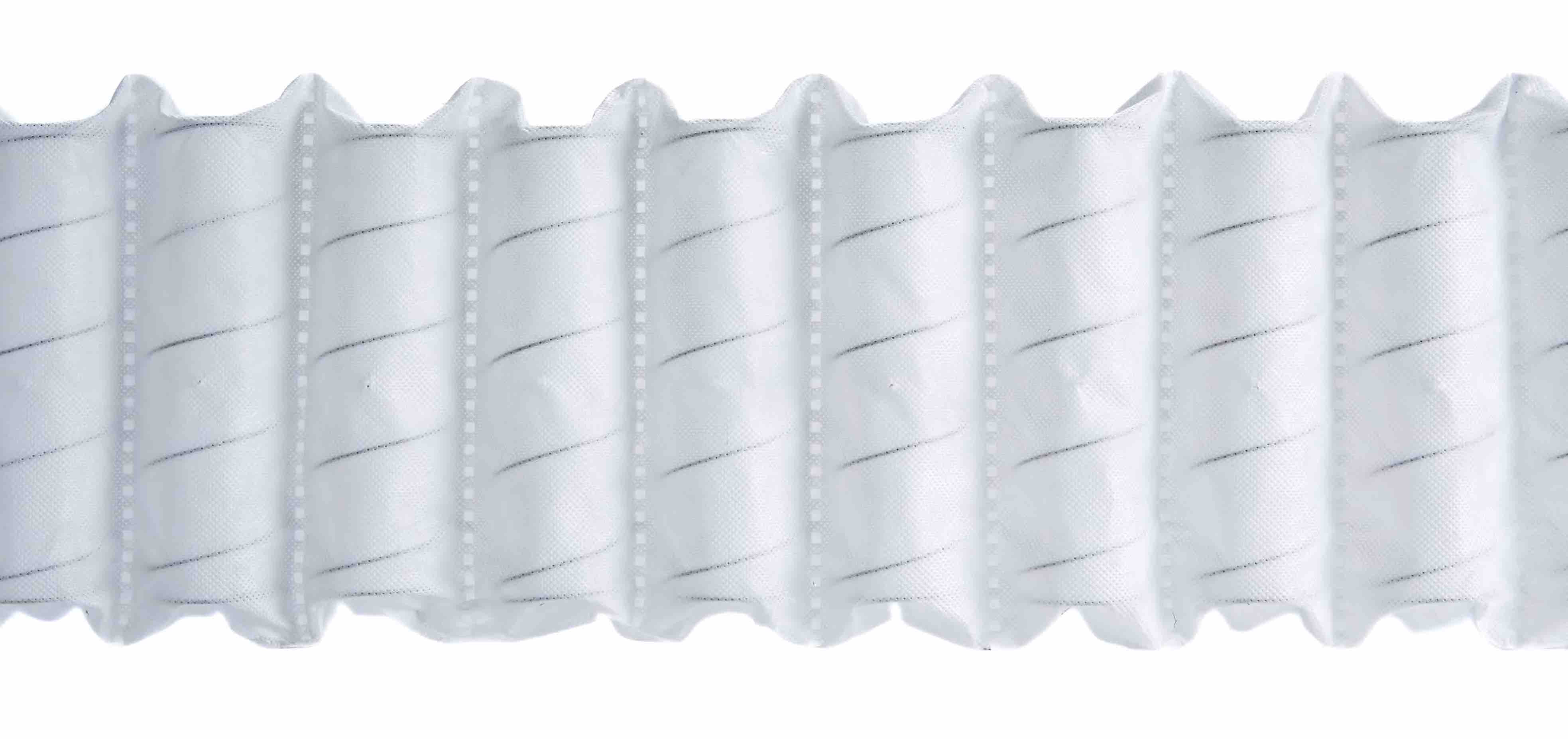
2. Calico Pocket Springs
Calico encased pocket springs are encased in a breathable natural calico cover which is then stitched together. Highly responsive and much more breathable.

Hybrid pocket sprung mattresses do exist, with pocket springs being used in combination with memory foam or gel. Some people like the moulded feeling of memory foam with a more supportive pocket sprung base, whilst others look to gel to provide similar benefits, but with a better level of breathability. However, in our experience, you just can’t beat natural fibre fillings.

All the high-end manufacturers, such as Savoir beds and Vispring, will use calico pocket springs.
Pocket springs must be matched with suitable upholstery
For instance, there is no use having a super-duper all singing all dancing pocket spring unit when it is not backed up by an element of substantial upholstery.
As you browse through the internet looking for your perfect mattress you will soon see that, in most cases, great swathes of text are focused on how good the pocket springs are in any particular model, the science behind the design and how you will sleep like a baby. All of this will be relatively pointless if equal space is not designated to the rest of the mattress, the upholstery, the detailing and so forth.
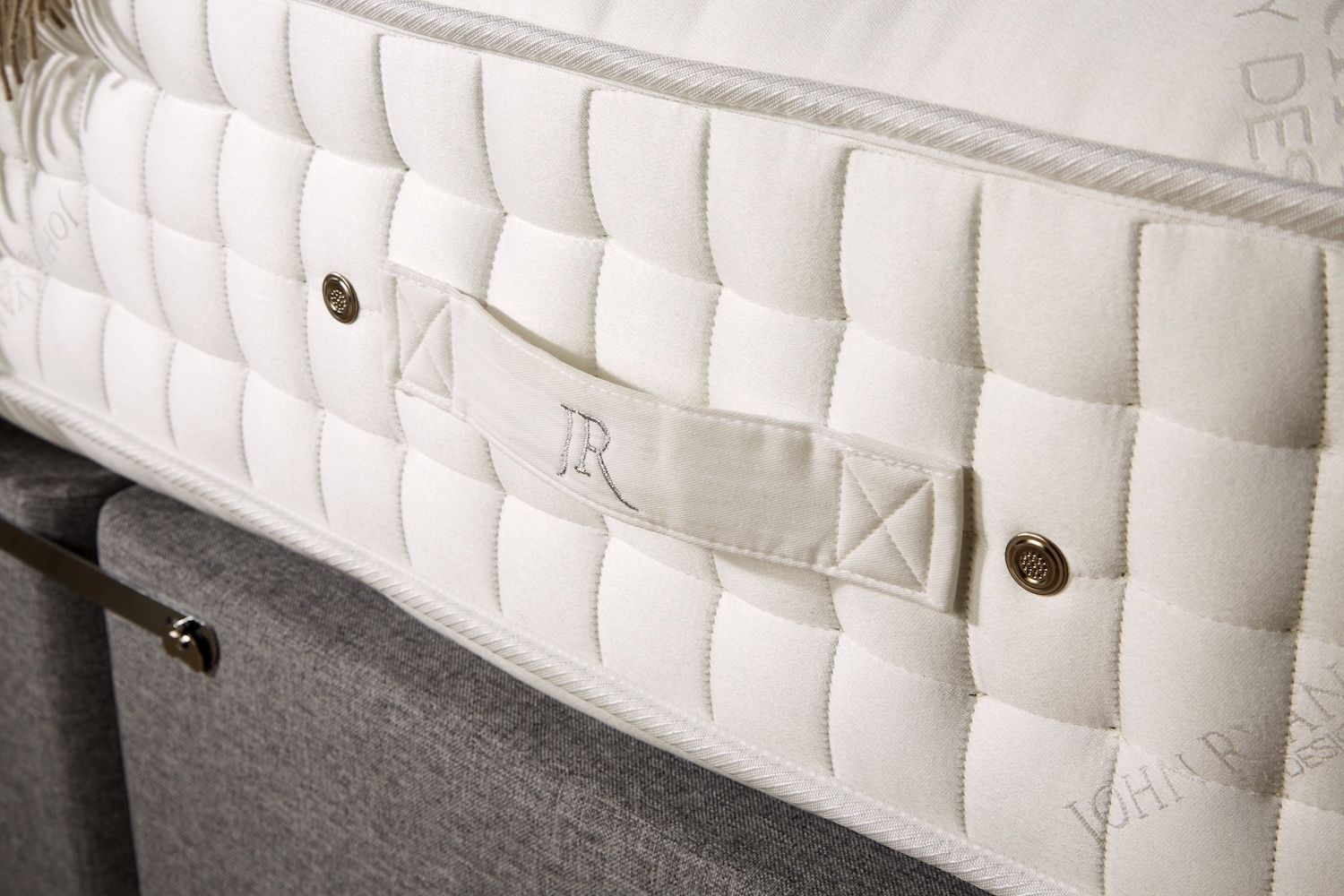
The fact of the matter is that a standard pocket sprung unit, which forms the basis of many mattresses, will be suitable for practically everyone. This is especially true when compared to a cage sprung or open coil mattresses, which should be avoided at all costs. Standard spun-bond pocket springs are not overly expensive and will offer you all the support you will require.



As we’ve said, the most pocket spring units you can get into a king-sized mattress on one layer is 2000. Mattresses described as having more than this are utilising double-layer construction techniques, or they are utilising a suspension pocket sprung unit, or they are using mini springs to increase the count. When looking at descriptions, if you see a specification with more than 2000 pocket springs you really do have to examine how this was achieved.
As we have said in previous posts, the only differentiating factor between many mattress manufacturers is the nature of the springs used. Fundamentally, the springs will more often than not be similar, but how they are constructed will provide enough difference to achieve the elusive brownie points that will sway you into thinking that their product is somehow better than the competition.
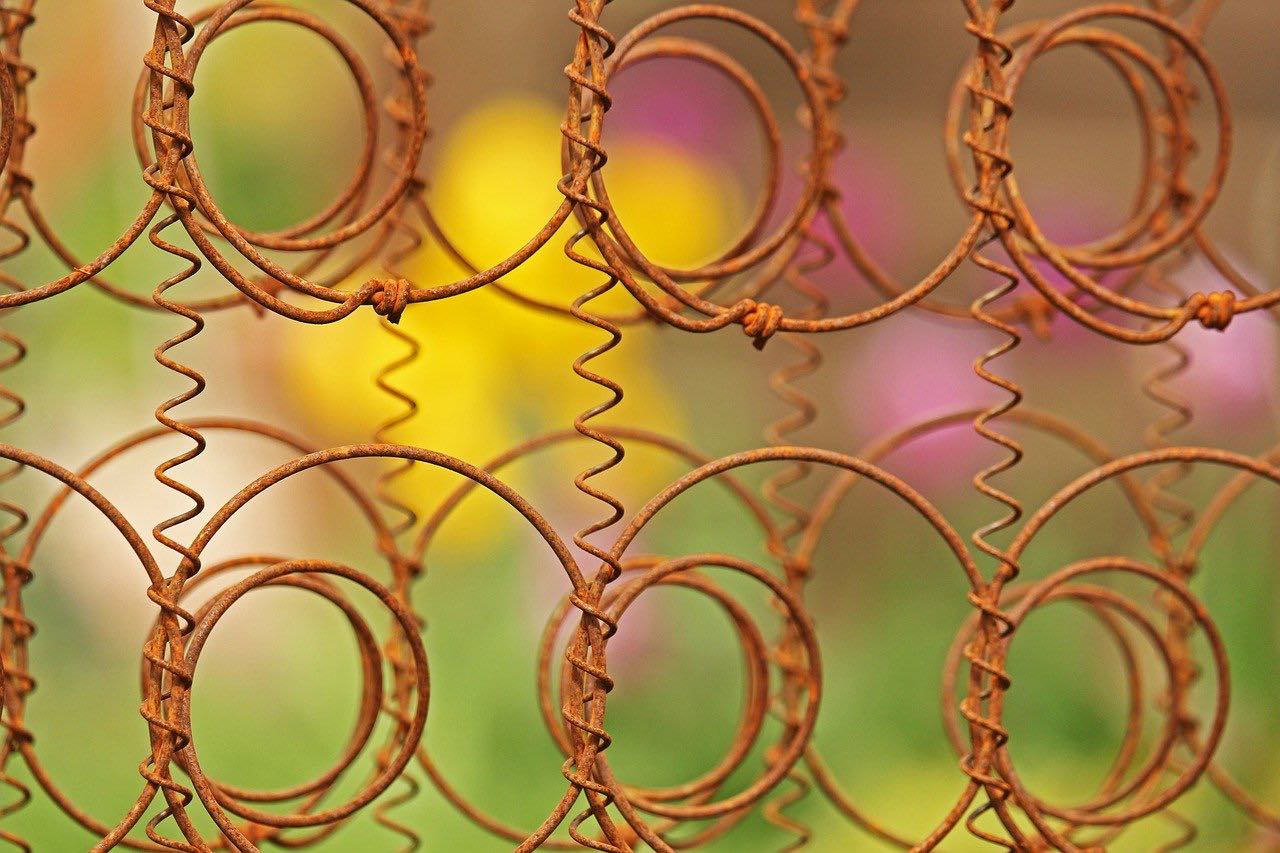
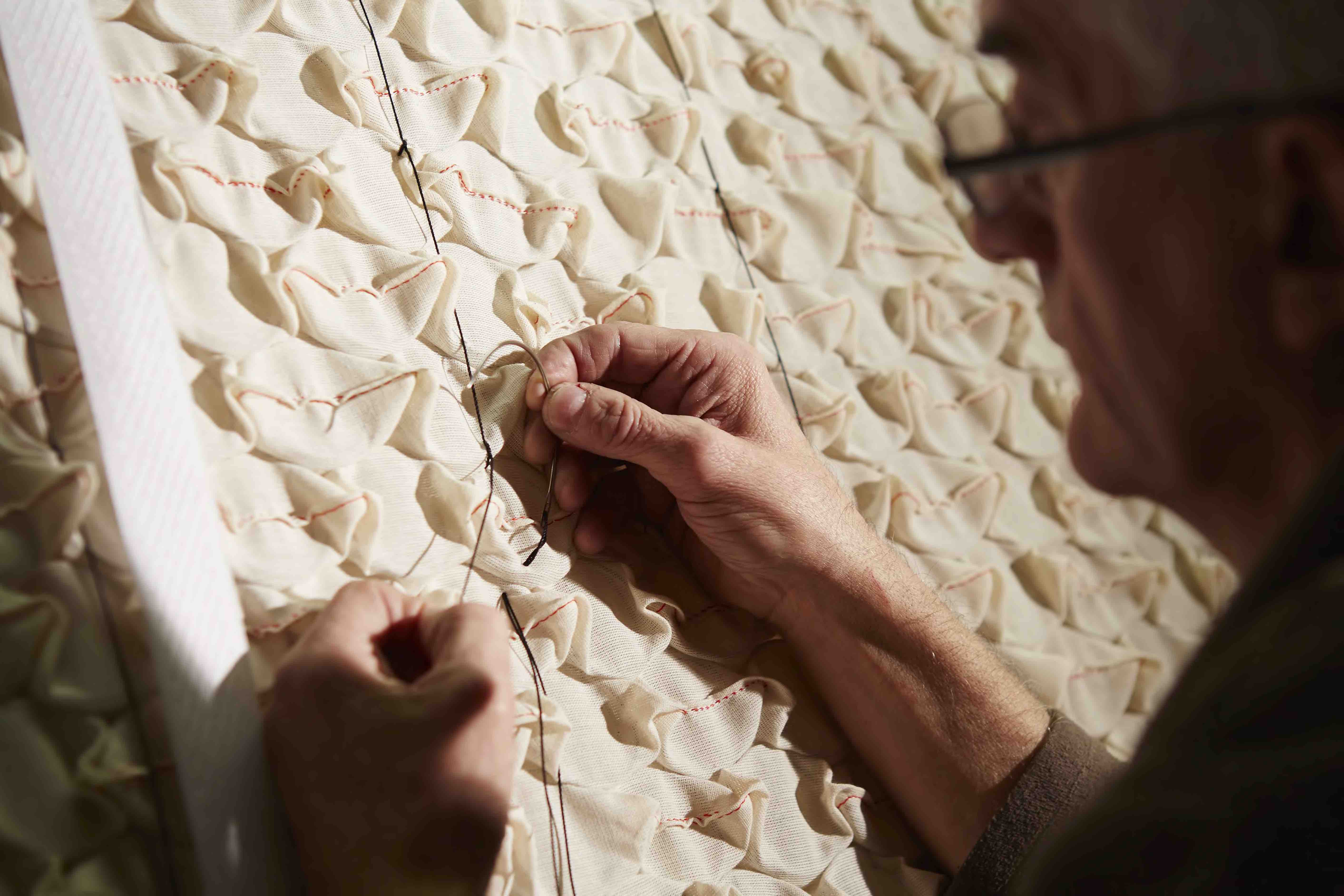

Generally, and this certainly does not apply in all cases, manufacturers tend to go down the soft / medium/ firm route and use the firmer springs on the 1000 counts to softer springs on the 2000 counts. The theory is that 2000 pocket springs do not have to be as supportive as 1000. The support will be there, but spread out over a greater number of springs.
Is a pocket sprung mattress good for a bad back?
We often get asked this question. A pocket sprung mattress could certainly help you to sleep sounder if you suffer from back problems. The fact that each spring reacts individually means that your spine will be far better supported than it would be on an open coil mattress.
However, there are lots of other considerations to take into account when it comes to alleviating back pain. These range from the firmness of the mattress in question, to comfort layers and even the best sleeping positions for lower back pain.
Considering an orthopaedic mattress can also help, as they’re designed to reduce the stress that’s placed on your back, neck and joints. We’ve previously looked at the best orthopaedic mattresses for back pain sufferers, and have already explained that the long-standing assumption that firmness is “good for bad backs” isn’t quite correct. Just like pocket springs alone don’t necessarily make an optimal mattress for a bad back, factors like spring tension are actually far more important that simple questions around “soft or firm”.
Pocket Springs vs Memory Foam
If you’re prone to overheating in your sleep, then the ventilation that’s offered by a pocket spring mattress is much better than memory foam. Memory foams retain heat, so can easily lead to a hotter than normal night’s sleep.
Additionally, sufferers of sore joints or people who move around a lot in their sleep are also better served by pocket springs. Memory foam may let you sink into a bed, but pocket springs distribute your body weight a lot more evenly. This promotes healthier sleeping positions and keeps your spine in much better alignment.
Ultimately, there are plenty of better alternatives to memory foam mattresses. Some people certainly like memory foam mattresses, and if you’re on a tight budget they may have a place. However, in most circumstances we certainly wouldn’t recommend them over durable, natural materials.

Guide to pocket spring mattresses
A good thing to bear in mind is that a 1000 / 1500 / 2000 pocket sprung unit will be broadly similar from about 90% of all manufacturers. It is what is placed on top of the units (upholstery) that makes the difference in Price and in quality.
Total spring counts usually come in at 600 / 800 / 1000 / 1200 / 1400 / 1500 / 2000 pockets per unit.
The lower spring counts will have a larger diameter spring. The higher spring counts will have a smaller diameter spring. One of the most prolific questions we get asked, and one that’s abundant on internet forums, is “how many springs are best?”. As you’ll have picked up from what we’ve already written, this may be a simple question but the answer is not! The response to this question should always be followed up with “best for what?”
Which is best: a pocket sprung or open coil Mattress?
Pocket springs are king when it comes to bed choices. If you are torn between two similar mattresses, one open coil and one pocket sprung, the pocket sprung mattress will always win hands down! Like I said above, the minimum 600 pocket count is far superior to any open coil or continuous coil mattress you can get. It is so unlikely an open coil/continuous coil mattress will have a quality level of upholstery attached, and all these fall within the low-end range of mattresses.
How many pocket springs do I need in my mattress?
You should aim for at least 1000 pocket springs in a mattress: up to 2000 in a single layer.
If you look at the complete range from Rest Assured, for example, you will see that the bulk of their mattresses utilise a 1400 pocket spring unit. This count will suit the majority of users: not too firm and not too soft.
A bigger person (such as my 20st Rugby Player friend) will gain more benefit from a 2000 unit. His weight will be equalised over a greater number of springs. The springs will not be fully compressed, but allowed to ‘move’ with him. If he was on a 1000 pocket unit, for example, the weight is distributed over a lesser number of springs. My ten stone friend will be quite happy on 1000 pockets.
You’re probably now thinking that if a 1000 spring unit is firm, then why would that suit our ten stone friend? Good point. The Firm spring unit only has 1000 springs and at a gauge of, say, 1.5mm. The 2000 spring unit at Soft will have a gauge of 1.2. This difference in spring gauge is fractional and nominal between two individual pockets. They will both compress easily under the pressure of your hands. As the number of springs increases, as in a complete unit, it takes more pressure to compress them.
This is only half the story, though! The other difference between 1000 springs and 2000 springs is the tension of the spring itself. There is no hard or fast rule on what gauge wire is used on a particular spring count: A 2000 unit can utilise a firm spring (e.g. 1.5mm) or it can utilise a soft spring (e.g. 1.2mm). And it is this reason alone why the question above cannot be answered with any degree of precision. It is so unlikely a retailer will know what gauge wire is used on any particular unit contained in a particular mattress.

Tailored Pocket Spring Gauges – Soft, Medium or Firm?
Once you move away from cheaper mass-produced springs, you then have the option of tailored spring gauges. This means that (depending on your weight) you can choose a soft, medium or firm spring. As a result, you have the potential for split tension mattresses and zip and links. So if you and your partner are different weights, then you can have different tensions to suit each of you.
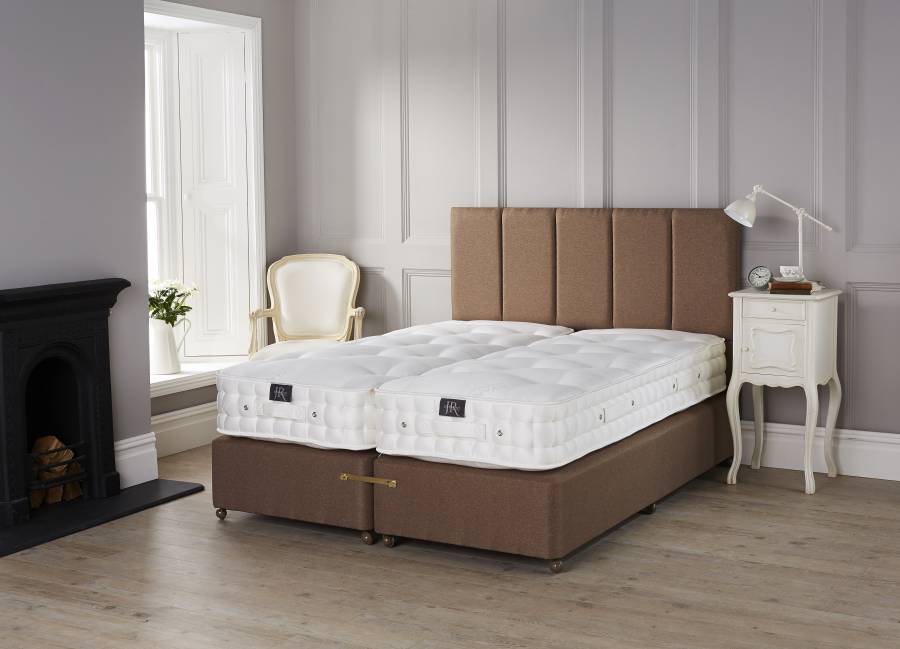
A split tension mattress is a one-piece mattress where one side has one spring tension and the other side has a different spring tension.
Zip & link mattresses are two separate mattresses that can have completely different spring tensions. They zip together as a one-piece mattress.
Our Handmade mattress range is available in both zip and link and split tensions if required, creating the perfect sleeping experience for both of you!.
Pocket Spring wire diameter explained
Spring wire diameter is sometimes shown on product descriptions (not to be confused with spring gauges). It shows you how thick the wire is for that spring unit. The thicker the spring wire, the firmer the support you will get from it, as it’s harder to compress. The gauge refers to the torsion, push-pull measurement which tells you how resilient/firm a mattress spring is. An example of this is an orthopaedic mattress, which has a gauge of 12 and is very firm.
We have a handy table that allows you to see the spring wire diameter we use in our range and the tension that the spring is set at. We also, unlike many competitors, allow you to see what the weight tolerance is for these springs. This is crucial when working out the support you need and we detail this more in the article on soft, medium & firm.
| Spring Tension | Wire diameter (Gauge) | Weight Range |
|---|---|---|
| Soft | 1.2mm | Bespoke Tension (Please Call) |
| Medium | 1.4mm | Upto 16 stone |
| Firm | 1.6mm | 16 stone plus |
| Extra Firm / Orthopaedic | 1.9mm | 20 stone plus |
How are pocket spring mattresses made?
In most mattresses, you will come up against the pocket sprung unit itself, which will be relatively similar. In this country they are produced in large factories, such as Leggett and Platt, Charles Blythe and the like. There are also imports, with the most regarded being Agro gmbh (Germany). Currently, the most prolific imports of pocket sprung units come from Turkey and South Africa.
Some manufacturers have the equipment and facility to produce their own pocket springs. Such manufacturers include Vispring/Harrisons and, of course, the manufacturer we use who makes our Artisan range: all completely made in Britain.
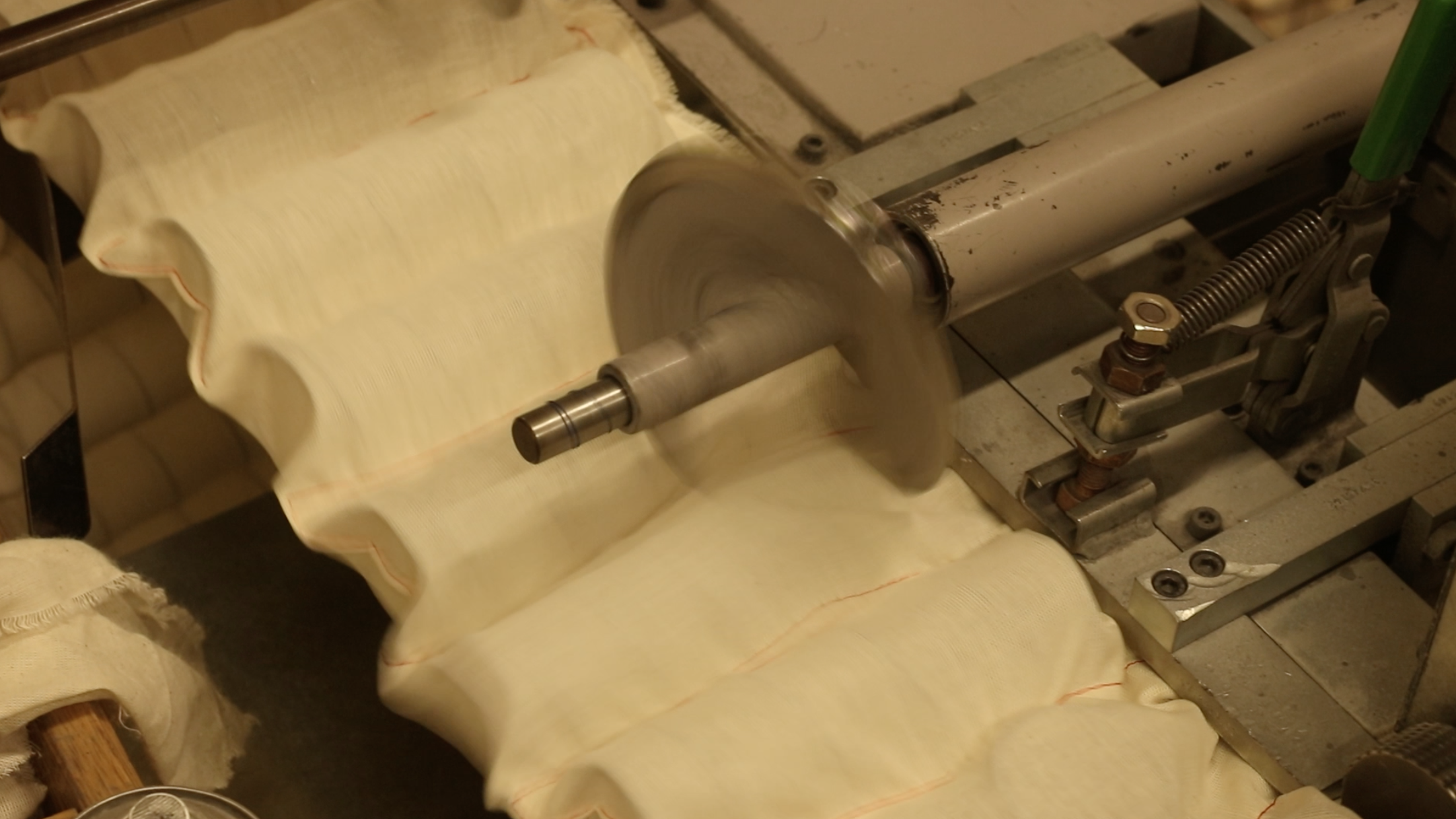
Each one of our Artisan Calico Encased Pocket Springs is made by a specialist piece of machinery. Each individual pocket spring is formed and then inserted into a calico sleeve which is then machine-stitched shut. Once each length of pocket springs have been formed, they are then hand-cut so each strip forms one piece. Cheaper synthetic pocket springs may be glued together (instead of stitching) to reduce the time required to make them.
What’s the length of a pocket spring?
This is another very good question. The expectation that a quality pocket spring will be 16cm is usually standard in high-end mattresses. Each is usually between 6 and 9 turns. Again, anything above 6 turns is almost superfluous. Retailers have made springs longer for marketing, but 9 turn 20cm springs are actually really unstable.
We use the same spring type as Vispring. 6 Turns, 16cm long and in 3 different wire gauges. All our Artisan springs are Calico encased and vanadium coated. We avoid shorter micro springs as they compress far too quickly and offer far less support (other than inflating the spring count for manufacturers).
What’s a Vanadium pocket spring?
Vanadium is used in the steel forging process and provides strength to the metal, which assists when it is then formed into a pocket spring. It also has a low oxidisation value, meaning it doesn’t corrode as quickly as other metals. As a result, these pocket springs don’t rust.
We use Vanadium on our calico pocket springs that are found in the higher end Artisan models. Vanadium is often found in metal alloys and top-end tools to give strength and durability against corrosion. It is used within our springs to ensure they are of the highest quality, giving an enhanced lifespan and longevity. Most manufacturers couldn’t tell you what is in their spring wire; you will probably just get shrugged shoulders. However, here at John Ryan we can share with you the exact composition of our calico vanadium pocket springs.
| Chemical Composition of Steel Wire | C | Mn | Si | P | S | Cu | V (Vanadium) |
|---|---|---|---|---|---|---|---|
| Percentage Contained | 0.71 | 0.54 | 18 | 0.12 | 0.014 | 0.190 | 0.5/0.9 |

Other types of Pocket springs – Cortec, Revolution & Micro Springs
Just before 2020, the mattress market saw a flood of new ‘spring innovations’, which were all there to tempt you to certain brands’ mattresses. Spring technology has pretty much remained the same for over a hundred years. The simple spring mechanism works by compressing and extending based on a load applied to it (i.e. a sleeper loading the spring when they lie on a mattress).
There’s only so much innovation you can do with a spring, such as changing its shape or size. It will have some influence, but is it enough to spend hundreds of pounds more on a new mattress? We take a look at a few of the newer spring types so you can make your own mind up.
Cortec Pocket Springs: Cortec springs by Harrison Spinks are an elongated pocket spring. That means they are thinner and taller than regular pocket springs. Cortec springs are not glued together but heat-sealed into rows, meaning they are glue-free. You don’t need glue to bond them together as they can concertina together by being folded in their rows. Imagine a roll of paper labels and how each one can be folded back on each other or torn off. This is the same layout as the Cortec spring. They are still synthetic coated pocket springs and, unlike our Calico ones, they are not vanadium coated, so won’t be as impervious to rusting over time.
Revolution Pocket Springs: This is again another innovation from Harrisons which involves placing a smaller spring within a regular-sized pocket spring. So you have two springs in one. We’ve trialed these and not found a huge amount of comfort difference between the two. We also do have reservations about how sure they are that the smaller internal spring won’t get stuck or trapped in the larger spring.
Micro Mattress Springs: These are the latest in spring count hype. Micro springs are tiny synthetic pocket springs that come in rows of 1000. This means you can add a few layers to suddenly boost the overall spring count of a mattress. We really don’t rate micro springs as they compress almost instantaneously, making them redundant in our tests. We can only imagine that retailers are now using HD or micro springs simply to up the spring count in the battle to have the higher figure. However, this simply means less upholstery for you. The more layers of springs you place in a mattress, the less room there is for the upholstery comfort layers. Bear this in mind!
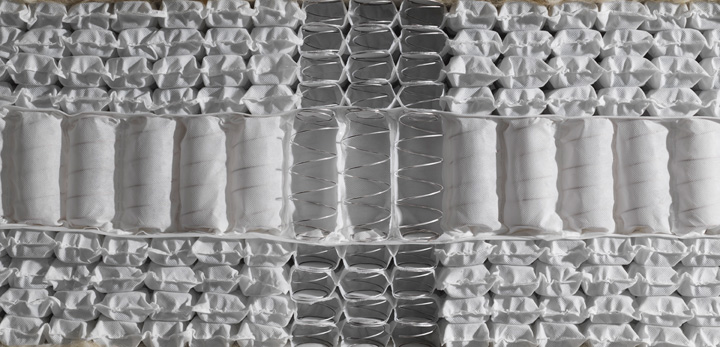

If you’re wanting the best of the best you need to be looking for calico pocket springs. If your budget constrains you, a spun-bond pocket spring unit with at least 1000 pocket springs per kingsize will get you a mid-range mattress. There is also a post on this site about the anomalies of soft medium or firm mattresses. It’s worth a read, particularly if you are struggling with how on earth a mattress can be described as such. If you have different body weights, we can create split tension mattresses or zip and link beds which can be tailored specifically to your weight.
Lastly – if you want to get really informed about the details of pocket springs and the different tiers, gauges and latest developments – you can read the detailed arguments on the John Ryan By Design site. To start you off, begin by viewing some of the best handmade mattresses in our shop, where we only use the highest quality pocket springs and coverings. Still struggling? Then why not call our small expert team based here in Manchester on 0161 437 4419 to see if we can help?
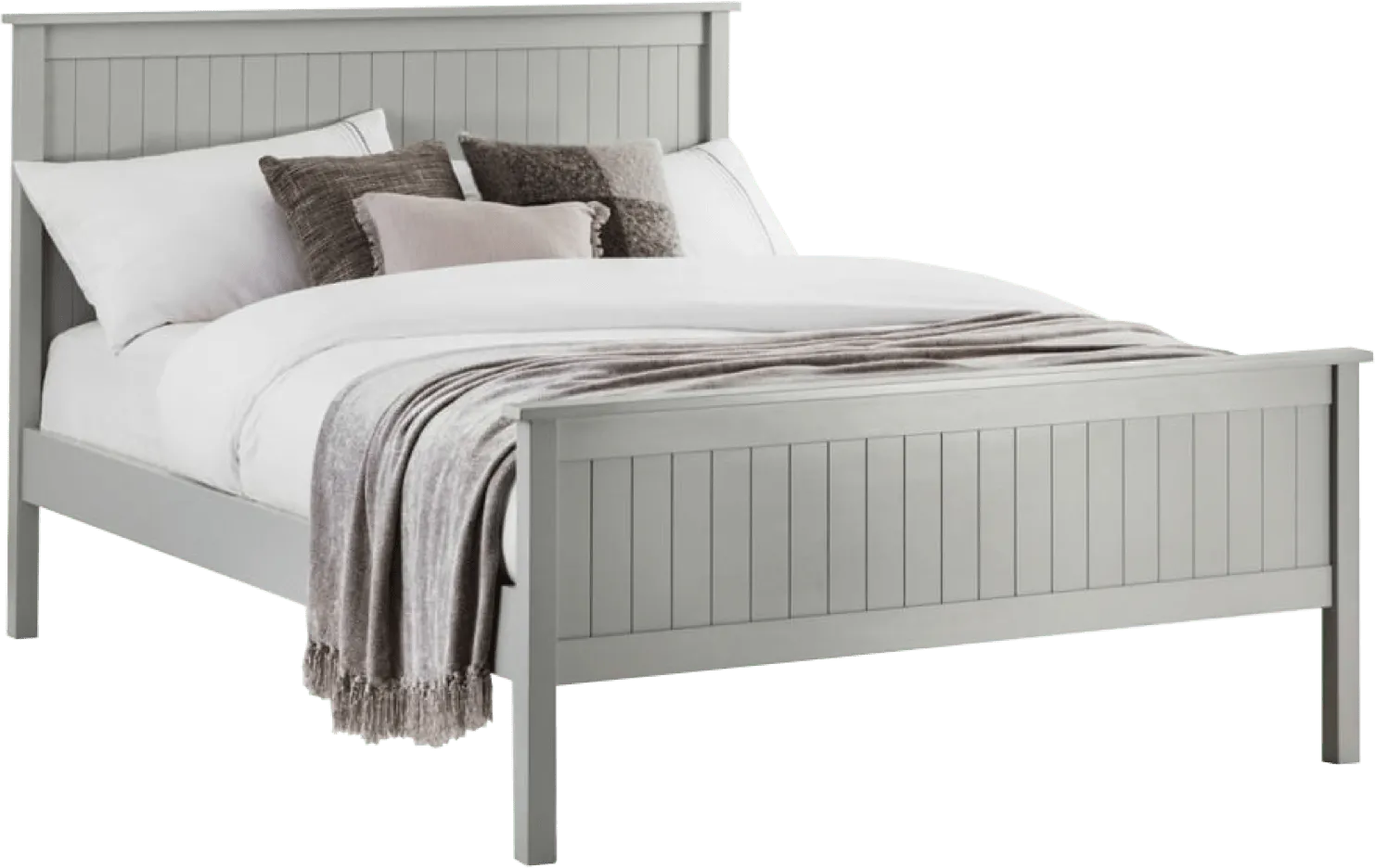
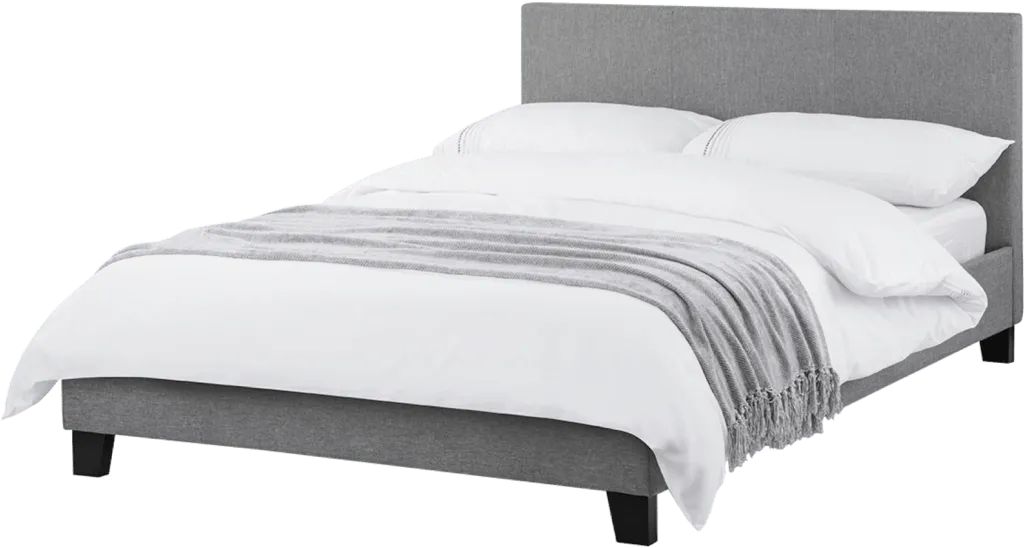
Ask us a question.
There are over 6000 questions and answers submitted by you on all questions about mattresses and bed problems. Enter a keyword such as Vi Spring, John Lewis beds, bad back or Memory Foam and see if your question has already been answered.
You can filter popular questions by the categories below. If you can’t find an answer, ask a new question below. We aim to respond to all questions within one working day.




































 Mattresses
Mattresses  Take our mattress quiz
Take our mattress quiz  Contact
Contact  About us
About us 


